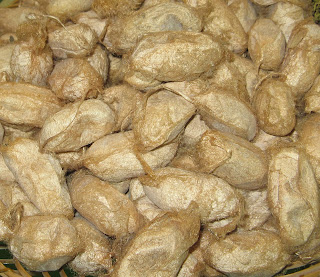Silk, the world loves it and it is one of the most premium and luxury fabric in the world. We take you on a brief on innovations of silk.
Silk one of the oldest of fabric known to mankind has held its own in the world of luxury. Silk has been coveted, traded and zealously guarded. Given this romance around silk, there has been a continuous process for innovation in it. Along with it there have been innumerable research to create parallels from other plant and insect bodies. The results have been interesting, but the fact remains that Silk has managed to hold its own. However, it is interesting to trace the efforts made for these innovative alternatives. Read on and enjoy the brief compilation.
The most recent in 2012 has been the weaving of cloth - the world’s largest pieces from spider silk. Simon Peers and Nicholas Godley worked on an unique five year long project, and silk from over one million female golden orb-weaver spiders were collected from Madagascar. This was woven into a brocaded shawl and a cape. The process does not kill the spiders but they are released in the wild. The yellow sheen of the spider silk is its natural colouring. The duo had earlier displayed in 2009 a 11 meter long cloth woven by the golden orb spider, this was a precursor to this unveiling. The weaving has been done as a form of a revival of centuries old technique.
Not far behind has been the work in Japan. Spider silk and thread has been used by Japanese researchers at Shinshu University in Central Japan, to create durable comfortable pair of socks. Silkworms have been genetically modified to create good spider silk. The fiber is the result of more than 10 years of research, the primary aim of which was to switch to natural fibres which are recyclable to those using artificial fibres made of oil resources. At the same time revitalize the Japanese silk industry reeling from Chinese onslaught. The spider silk consists of 10% spider proteins and 90% silk by injecting genes from golden orb weaving spider into silkworms. A spider produces 7 different types of thread ranging from tough to elastic which goes in weaving its web. The threads according to experts is tougher than steel and lighter than fibres like Kevlar. But spiders cannot produce excessive quantities of thread. Commercial production of this is expected by 2010. Polynesian fishermen use spider threads for fishing nets.
Go cool with silk for summer – IIT led the way a long time back. Recent innovation by the Department of textile technology at IIT Delhi can help one wear silk even in summers. Silk treated according to the innovation will help absorb moisture and keep the wearer cool. The mulberry silk fabric absorbs sweat and gives the wearer a soothing comfort. It has been developed by a team led by Deepti Gupta, associate professor at the department along with S. Periyasamy and M L Gulrajani. The silk fabric has been prepared using hydrophobic and hydrophilic features. The outer surface is stain repellant with hydrophobic qualities while the inner has hydrophilic properties. The fabric is well suited for garments like shirts, trousers, saris, blouse….It will however take time before the findings are patented and commercial production begins.
Of course Dermasilk a one stop cure for skin ailments continues to be popular.
Sleep well with scratch free pyjamas. A pair of pyjamas which is itch free, regulates body temperature, well what more could one ask for. Scientists who have developed the nightwear have used a fabric called Dermasilk. The fabric can also lessen itchings caused by chronic skin diseases like eczema and dermatitis. The pyjamas have been developed specifically for Travelodge – a hotel chain. The developments followed a finding that people are awake because of itchiness. The survey carried out by The Daily Telegraph on 3000 respondents that nearly, 23% of adults suffer from itchy nightclothes which prevents people from getting a good night’s sleep. Also another big problem faced with nightclothes is that people feel it is either too cold or too hot.
(There are plenty more such innovations which will be tracked as we go along.}


Comments
Post a Comment